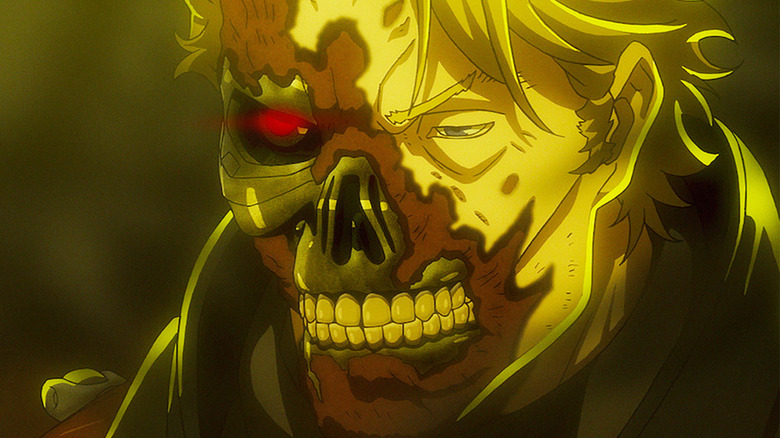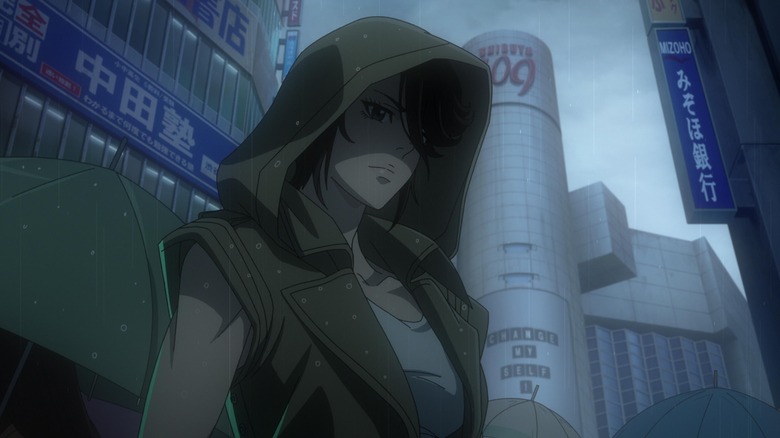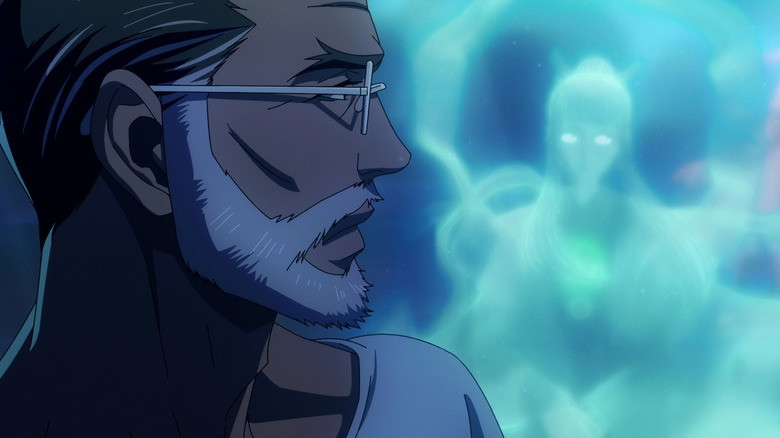James Cameron’s “The Terminator” is an undeniable action-horror classic, but seven years later — armed with groundbreaking digital technology and a budget that would make it the most expensive film at the time in history — he completely changed action films forever with “Terminator 2: Judgment Day.” In the decades that have followed, countless creatives have desperately been trying to capture a morsel of the feast served up by Cameron, to varying degrees of success. Each “Terminator” sequel since, as well as the short-lived (and underrated) TV spin-off “The Sarah Connor Chronicles” exist in the shadow of Cameron’s masterpiece, stalked by the looming threat of his genius not unlike a T-1000 tracking John Connor.
The latest addition to the beloved franchise is Netflix’s “Terminator Zero,” an anime series from studio Production I.G. (“Ghost in the Shell,” “Star Wars: Visions”), written by Mattson Tomlin (“Project Power,” the upcoming “The Batman Part II”), and directed by Masashi Kudō (the “Bleach” franchise). Instead of rehashing a storyline that has been eating its own tail for a very long time (“Terminator: Dark Fate,” innocent), “Terminator Zero” wisely elects to focus on a different time period, a different location, and entirely different characters to expand the world Cameron first created.
“Terminator Zero” opens in a ravaged 2022 with resistance soldier Eiko (Sonoya Mizuno/Toa Yukinari) fighting against a cybernetic assassin, the titular Terminator (Timothy Olyphant, who barely speaks). Eiko is then sent back to August 1997, just before Judgment Day, to protect the family of Malcolm Lee (André Holland/Yuuya Uchida). Lee is a gifted scientist who will one day launch Kokoro (Rosario Dawson/Atsumi Tanezaki), an AI that will become Japan’s answer to Skynet and hopefully curb his fears of an inevitable robot uprising that will obliterate all of humanity.
As a first season, “Terminator Zero” is frustrating at times — unapologetically laying the groundwork for bigger, badder, and bloodier things to come on a streamer known for unceremoniously canceling great projects before they’ve had time to find their footing. But unlike many of the live-action sequels that do the same, “Zero” has a unique voice that prevents it from ever feeling stale.
Terminator Zero tries to make sense of a messy mythos and mostly succeeds
Without the “chosen one” rhetoric of John/Sarah Connor to explore, Tomlin boldly attempts to unravel the complicated time travel rules established by the live-action sequels, which have become more tangled than a pair of headphones in a back pocket. It’s here that “Terminator Zero” struggles the most, but to judge the series for trying to make sense of the franchise’s messy mythos feels an awful lot like shooting the messenger. Fortunately, the groundwork beats are familiar enough: A resistance fighter is sent back in time to protect someone Skynet wants killed before they can become a threat to their tyranny. Composers Michelle Birsky and Kevin Henthorn brilliantly incorporate elements of Brad Fiedel’s original music into their absolutely killer new score and the second episode features a fantastic highway battle between Eiko and a Terminator that fits right at home with any of the live-action set pieces that do the same.
With these familiar pieces in place, “Terminator Zero” gets to shine in the ways it is not like the other installments. Eiko’s goal of protecting Malcolm is not because he’s going to become the savior of the people like John Connor, but because she needs to keep him alive long enough to convince him Kokoro isn’t going to achieve what he thinks it will. As we in 2024 see the increasingly horrifying ways AI has already begun to infiltrate our world, the thought of a “Good, Actually, I Promise” AI being the only way to stop Skynet is the thing of nightmares.
And this is precisely why the Terminator wants to go back in time as well — to make sure Kokoro is on team Skynet when Judgment Day arrives.
Terminators are terrifying once again
I’ve written before about my lifelong fear of Terminators (and by extension, robots with human teeth), so for me Terminators have never stopped being a pure shot of terror, no chaser. However, with the exception of Gabriel Luna in “Dark Fate,” Terminator performances have all failed to reach the impossible bar set by Robert Patrick in “T2: Judgment Day.” Well, that is until now, as Timothy Olyphant’s Terminator is a perfect reminder of just how goddamn horrifying these killing machines are and have always been. Thanks to Production I.G.’s gorgeous animation and phenomenal storyboarding, the anime style is as effectively scary as anything we’ve seen in live-action.
This coupled with a culturally specific change to the series — that firearms are significantly more difficult for civilians to get their hands on than in America — the stakes feel genuinely high for anyone in the Terminator’s crosshairs. Malcolm and his family are far more dependent on Eiko than the Connors ever were on their respective guardians and the high-octane action choreography cannot depend on unloading a wash of bullets in an attempt to look cool.
Without the restraint of a two-hour cinematic runtime, “Terminator Zero” bites off a little more thematically than it can chew with all of the extra time, but it’s a delicious enough first season that I can’t help but hunger for more. Here’s hoping Netflix allows the series to continue for more seasons because it’s not only one of the best animes the streamer has put out, but “Terminator Zero” is the new direction the franchise needs to pursue. Now that season 1 is out of the way and the necessary callbacks have been factored in to quell fandom expectations, it’s time to see Tomlin’s vision through to the end.
/Film Rating: 7 out of 10.
“Terminator Zero” is now available to stream on Netflix.





